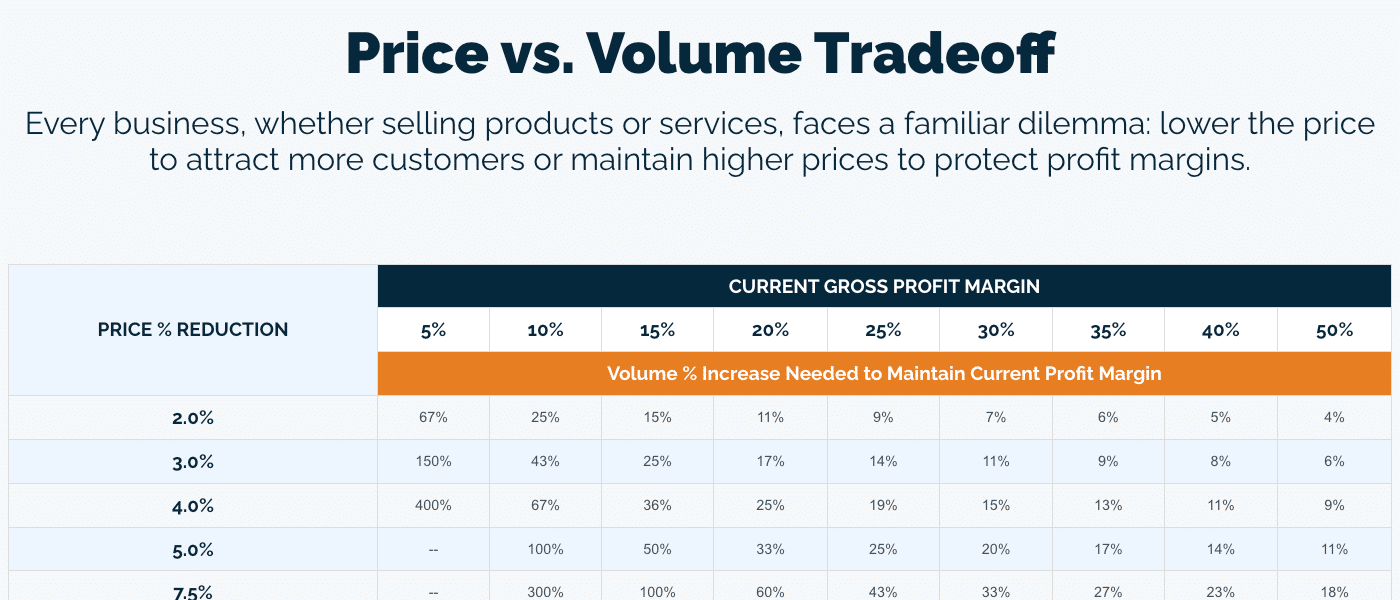Unlock Profitable Recurring Revenue with SaaS Pricing Models

Over the last decade, software CFOs have shown a growing preference for recurring revenue models, leveraging software as a service (SaaS) to provide predictable revenue, cash flow, and better control over customer churn rates. This shift has contributed to higher valuations and increased capital investments for software providers.
However, in their pursuit of customer acquisition and market share expansion, some software companies have downplayed the significance of price optimization. As a result, a disconnect between the price of their offerings and the perceived value by customers has emerged, leading to price-value misalignment.
Despite the benefits of recurring revenue models, the current landscape of higher interest rates demands a quicker path to profitability from software providers. Investors are increasingly focused on achieving sustainable financial success in a timely manner.
Now more than ever, CFOs need to consider their pricing models to meet investor profitability expectations and timelines. Key questions software CFOs should consider:
- How do I align price to customer value perception?
- What is the appropriate monetization structure for capturing value?
- How do I align customer needs and cost-to-serve to offer and price?
How do I align price to customer value perception?
Segment customers: Understanding customer value perception begins with knowing your customers, their intrinsic needs, and available alternatives. Customer needs are not uniform, as the same offering may have varying levels of importance and willingness-to-pay across different segments. Leading providers segment their customers using internal and external data to identify needs and architect the appropriate customer journey across existing customers and prospects as they mature their portfolios. For example, while all businesses need to compensate employees, a small business with few employees may not value a robust SaaS payroll solution as much as a large and complex organization. Additionally, as SaaS payroll providers roll out new offerings, they qualify a rollout and implementation roadmap that appropriately identifies upsell opportunities and migration plans across existing customers and prospects.
Identify customer needs and willingness-to-pay: Leading software providers segment their customers to understand the needs and willingness-to-pay of each cohort. This involves identifying willingness-to-pay and feature requirements through market research methodologies such as Conjoint and Gabor-Granger analyses, which assess trade-offs between different offerings at various price points. Armed with this insight, a payroll software provider might offer a lower introductory price with limited features for smaller customers, while providing a comprehensive offering at higher prices for larger customers.
Case Study: Market study reveals willingness to pay for an Education Software Provider
Benchmark competitors: Providers need to understand the competitive landscape by conducting research and benchmarking. Market studies, competitive price-value assessments, and win-loss analyses can help providers determine their current and desired value proposition in the market. This information helps calibrate pricing according to customer willingness-to-pay and identify competitive table-stakes. Continuing with the SaaS payroll example, smaller customers may consider competitor solutions or other alternatives such as self-managed or payroll-accounting services. If the SaaS payroll solution is priced above their willingness-to-pay or lacks appropriate packaging of features and capabilities, smaller customers may choose competitors or alternative solutions.
What is the appropriate monetization structure for capturing value?
Monetization structures in the software industry are diverse and multifaceted. They need to align with customer expectations, and scale for their growth and complexity. Additionally, monetization structures should consider practical financial and operational factors such as billing and payment systems, capital structures, and revenue recognition. Providers have the option to price offerings based on outcomes, consumption, company size, or the number of users / licenses.
Before choosing company or user-based structures, providers should carefully consider the appropriateness of outcomes and consumption-based structures that more directly link value to payment. For example, a corporate gifting platform that provides access to gifts for sending to customers or colleagues might initially seem suitable for a user-based structure. However, customers likely perceive their experience in more consumption-based terms, paying for each gift rather than paying for access. In this case, a consumption-based structure would be more appropriate, considering the tangible and quantifiable nature of gifting.
Outcomes: Outcomes-based structures price offerings based on the achieved service level or the offering’s ability to meet desired goals. Customers pay when the desired outcomes or service levels are delivered. For example, a marketing search engine optimization (SEO) solution might price based on the number of clicks or ecommerce transactions generated. This structure is attractive to customers as they pay only when their goals are met. However, outcomes-based structures may lead to less predictable revenue due to their contingent nature. To mitigate this risk, providers may charge fixed fees and credit them back to the customer upon achieving a revenue threshold. In addition, providers might set payment floors and caps to drive greater revenue predictability and align with customer expectations. By implementing these payment terms, providers can create a balanced and equitable pricing model.
Consumption: Consumption-based structures price offerings based on customer utilization. Customers pay as they use the offering, with pricing determined by pre-defined units of consumption. For example, a cloud data-storage provider might charge based on storage volume or the number of data pulls. Consumption-based structures provide revenue predictability, although there may still be some variability as consumption patterns fluctuate. Similar to outcomes-based structures, consumption-based structures might employ similar credit and floor / ceiling payment terms.
Company: Company-based structures price offerings based on the customer’s size or scope. Customers are charged a price per unit, such as the number of employees or markets served, or a percentage of their revenue or costs. For instance, a SaaS benefits or payroll solution might price based on the number of full-time employees or a percentage of the payroll. Company-based structures offer a degree of revenue predictability, although they come with some inherent risk since payment is tied to the customer’s growth and success. In this example, the provider stands to capture incremental revenues and profits as customers expand their workforce or employees receive pay increases.
Per-user / license: Per-user or per-license structures price offerings based on the number of users or licenses issued. Customers pay a fixed rate regardless of utilization or outcomes. User-based structures offer cost predictability for customers, as they are billed the same amount each billing cycle. They also provide greater revenue predictability for providers compared to outcomes or consumption-based structures. However, customers with low or variable utilization may consider reducing the number of licenses purchased or share licenses. To address this risk, leading providers proactively monitor utilization, audit for license-sharing, and capture customer feedback to improve the user experience and future versions of their offerings.
How do I align customer needs and cost-to-serve to offer and price?
Customers expect providers to understand their needs and often face decision fatigue when selecting offerings and features. To address this, leading providers create sophisticated yet simplified pricing structures that map customer needs to targeted bundles, while leveraging terms and conditions to differentiate payment based on utilization and cost-to-serve.
Bundling: Leading providers offer simplified bundles with clear differences in feature composition and pricing. As mentioned earlier, bundles that are packaged scientifically consider different features and price points that align with different customer segments. This involves setting an opening price point to promote trial, accompanied by more comprehensive bundles and add-ons / services to acquire or upsell customers with more robust needs. Providers will commonly put too many features and services in opening price point offerings, preventing trade-up or upsell sales motions.
Case Study: Delivered 10% revenue growth to a market-leading software provider through bundling & packaging restructure
Terms and Conditions: The price of a bundle is not the only payment lever. Contracts can include additional fees and escalations that differentiate payment based on cost-to-serve and specific needs. For example, providers may charge extra service fees for customers requiring “white glove” customer service. They may also include fee escalators or extra charges for customers who exceed target thresholds in terms of service support or who wish to utilize advanced features and functions.
Profitably Manage SaaS Pricing with INSIGHT
Selecting the right pricing model is a critical decision for SaaS CFOs. It directly impacts revenue generation, customer acquisition, and long-term sustainability. By understanding the characteristics of different pricing models and aligning them with their target market, SaaS providers can unlock growth opportunities and profitability. Careful analysis of customer needs, market dynamics, and pricing structures will empower providers to thrive in the competitive SaaS landscape.
Regardless of where your organization is in its SaaS pricing journey, providers need some level of pricing expertise and capabilities to effectively architect and manage pricing. If you’re not sure where to start or looking to optimize your existing pricing model, INSIGHT can help identify gaps in your existing systems and structures. Then, we’ll partner alongside your team to build clear objectives and steps toward best-in-class pricing. Contact INSIGHT to get started on the path to increased profitability.


